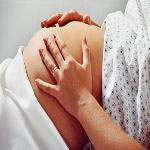
A report released by New York City's health department says the percentage of women who die in pregnancy and childbirth in the New York is double that of the national average. Health officials in New York say the maternal mortality rate in the United States itself rivals that of poorer developed countries like Singapore and Ireland.

Dr. Jo Boufford, president of the New York Academy of Medicine, which sponsored the maternal mortality conference where the report was released, says the developed and the developing worlds tend to promote different strategies to fight maternal death. And she says while both approaches have merits, each alone is only partially effective.
"The difference is the developing countries have focused on public health, prevention and primary and prenatal care in the area of maternal mortality," says Boufford. "And their struggle and barrier is having an adequate health workforce and facilities for the kind of high-tech things that happen to mothers that are at risk ..."
In contrast, Boufford says developed nations have excellent medical technology.
"But we have a rather poorly developed system of good primary care and prenatal care," she continues. "And our problem is connecting the prenatal care with the delivery site, making sure the information about a patient travels with that patient when they go into labor and go to the hospital. So we can deal with the high-tech and the crisis. Our problem is we're not focusing upstream on the prevention and the primary care, and the developing countries are just the opposite."
Maternal mortality in America is particularly high in New York City, where extremes of wealth and poverty abound, says Deborah Kaplan, who oversees the Bureau of Maternal, Infant and Reproductive Health for New York City's health department. The department analyzed the causes of 161 maternal deaths in New York between 2001 and 2005. The study found that half the women who died were obese and that 56 percent had a chronic illness, such as high blood pressure, heart disease or asthma. Black women were seven times more likely to suffer a pregnancy-related death compared to white women.
"And we think the issue for black women is they are more likely to be obese and have chronic illnesses, like high blood pressure, which put you at higher risk for complications during pregnancy," says Kaplan. "Black women, who are more likely to be uninsured, are living in communities where there is limited access to the healthy foods and exercise and activity that is necessary from early childhood on to reduce the likelihood of obesity and chronic illnesses."
Kaplan's agency is redoubling its efforts to identify obese women early in their pregnancies and to make sure their health care providers treat them as high-risk patients. It also is issuing health alerts to hospital delivery wards to diminish the risk of death in childbirth due to hemorrhage, which is more likely among obese moms.
"We recommended hemorrhage drills just like fire drills. For an event that doesn't happen very often, people need to practice. That's on the clinical end. On the bigger environmental end, our agency is involved in many areas related to obesity prevention that look at increasing access to healthy foods in the community. It's about raising awareness and engaging people in the community so that they are part of this work," says Kaplan.
To promote change at the grassroots level, the city is building coalitions that bring together community and government agencies. It also is encouraging leaders at faith-based communities to educate their congregations about the benefits of a healthy lifestyle.
"We work to promote breast feeding to prevent childhood obesity, which is where it all begins in terms of child health," says Kaplan. "We work with schools to get unhealthy foods out of the schools and ... promote health foods within the school environment. And we work with parents and community residents to really understand why this is so important, and for them to hopefully demand these healthy foods and places to exercise in their own communities."
Dr. Boufford of the New York Academy of Medicine says that the medical community must also examine its practices. For example, there may be a correlation between maternal mortality and Caesarean births, or so-called "C-Sections," which are performed in nearly half of all deliveries in some New York hospitals. The report found that 79 percent of New York women who died in childbirth had undergone the procedure.
"Now, that may be because they are sicker and they needed it, and C-Sections certainly save lives," says Boufford. "There is no question about that. But we need to understand much more about that. And I think the comfort with technology may have gotten ahead of what may be the best in terms of the management of the patient."
Government health departments nationwide are studying new strategies to protect maternal and child health, such as those outlined by the United Nations Millennium Development Goals, which calls for education, economic development and community empowerment to save lives and eliminate preventable suffering.
prenatal care:產(chǎn)前保健
congregation: a group of people who are gathered together in a church to worship God, not including the priest and choir (教堂的)會(huì)眾
Uneven progress in reducing global maternal, child deaths
Many maternal, infant deaths preventable using low-tech methods
African maternal and child mortality rate remains high despite improvements elsewhere
Study finds drop in deaths of mothers in developing world
(來(lái)源:VOA 編輯:陳丹妮)
